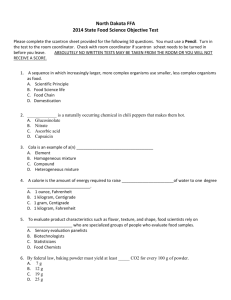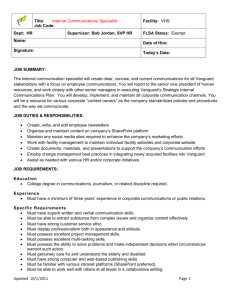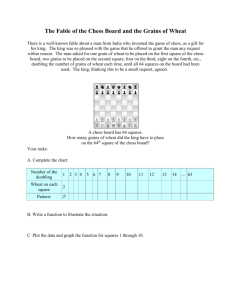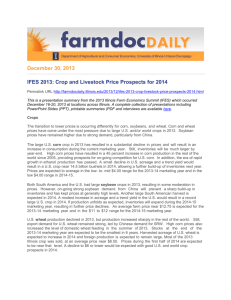Net Change in Income for Graze-out Stockers versus Winter
advertisement
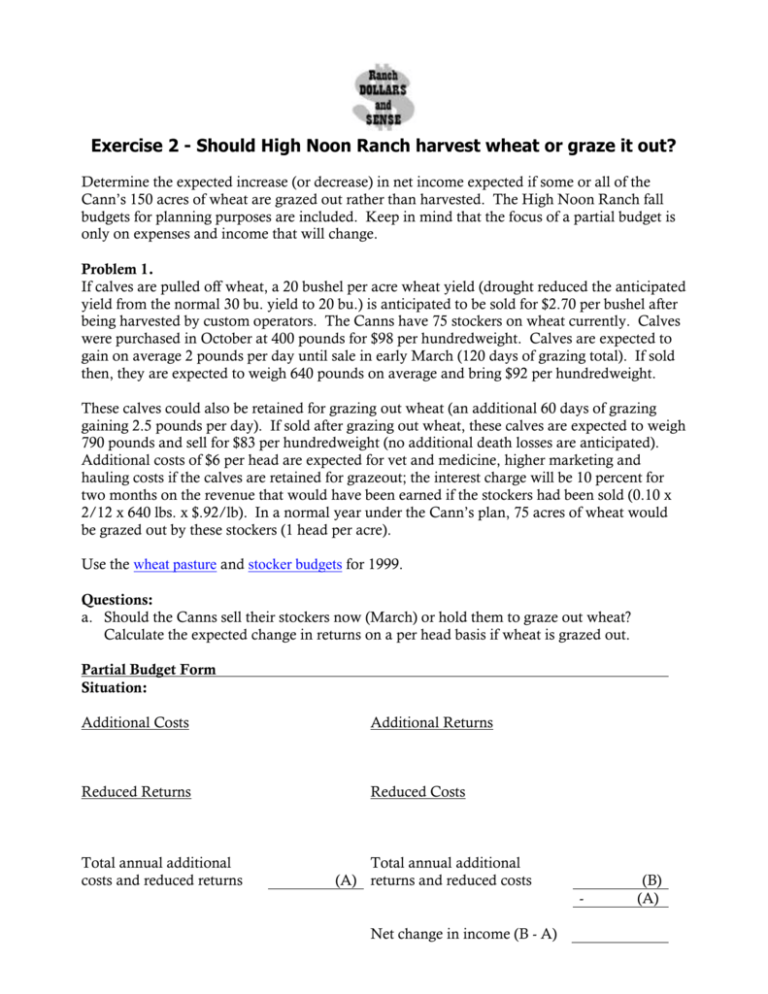
Exercise 2 - Should High Noon Ranch harvest wheat or graze it out? Determine the expected increase (or decrease) in net income expected if some or all of the Cann’s 150 acres of wheat are grazed out rather than harvested. The High Noon Ranch fall budgets for planning purposes are included. Keep in mind that the focus of a partial budget is only on expenses and income that will change. Problem 1. If calves are pulled off wheat, a 20 bushel per acre wheat yield (drought reduced the anticipated yield from the normal 30 bu. yield to 20 bu.) is anticipated to be sold for $2.70 per bushel after being harvested by custom operators. The Canns have 75 stockers on wheat currently. Calves were purchased in October at 400 pounds for $98 per hundredweight. Calves are expected to gain on average 2 pounds per day until sale in early March (120 days of grazing total). If sold then, they are expected to weigh 640 pounds on average and bring $92 per hundredweight. These calves could also be retained for grazing out wheat (an additional 60 days of grazing gaining 2.5 pounds per day). If sold after grazing out wheat, these calves are expected to weigh 790 pounds and sell for $83 per hundredweight (no additional death losses are anticipated). Additional costs of $6 per head are expected for vet and medicine, higher marketing and hauling costs if the calves are retained for grazeout; the interest charge will be 10 percent for two months on the revenue that would have been earned if the stockers had been sold (0.10 x 2/12 x 640 lbs. x $.92/lb). In a normal year under the Cann’s plan, 75 acres of wheat would be grazed out by these stockers (1 head per acre). Use the wheat pasture and stocker budgets for 1999. Questions: a. Should the Canns sell their stockers now (March) or hold them to graze out wheat? Calculate the expected change in returns on a per head basis if wheat is grazed out. Partial Budget Form Situation: Additional Costs Additional Returns Reduced Returns Reduced Costs Total annual additional costs and reduced returns Total annual additional (A) returns and reduced costs Net change in income (B - A) (B) (A) b. What are expected returns per head for graze-out stockers compared to winter-grazing stockers under different gain and price scenarios? Complete the table below to determine the sensitivity of the net change in income to price and gain assumptions. Net Change in Income for Graze-out Stockers versus Winter-Grazing Stockers (per head) Steer price Average daily gain for graze-out period (60 days) 2.25 lbs/day $0.79/lb. $0.83/lb $0.87/lb 2.5 lbs/day 2.75 lbs/day c. What other factors might affect whether or not stockers should be purchased for graze-out and how many stockers are purchased for graze-out? Problem 2. In some years, the Canns buy an additional 75 head of stockers for wheat grazeout which are then turned out on bluestem. However, a dry or wet year can impact the expected income. They can buy 400 pound stockers for $112 per hundredweight in March. In a normal year, they expect them to gain 2.5 pounds per head per day for 60 days on wheat. The stockers are then moved to bluestem pasture where they will gain 2 pounds per day for 60 days. They expect to sell them mid-July at 670 pounds for $98 per hundredweight. They expect a 2% death loss. Use the stocker budget for Feb. 2000. Questions: a. Should the Canns buy additional stockers? Why or why not? Use the budget worksheet below. Partial Budget Form Situation: Additional Costs Additional Returns Reduced Returns Reduced Costs Total annual additional costs and reduced returns Total annual additional (A) returns and reduced costs - (B) (A) Net change in income (B - A) b. What is the anticipated income to this wheat/stocker/bluestem enterprise if it turns out dry and they don’t get the gain they expected? What if pastures are lush and they get better than expected gains? Complete the following table to summarize expected outcomes. Scenario Assumptions Dry spring/early summer Gain 1.8 lbs/day over entire grazing period (120 days). Sell at 616 pounds for $92.5 per hundredweight. Gain 2.5 lbs/day on wheat (60 days), 2 lbs/day on bluestem (60 days). Sell at 670 pounds for $90 per hundredweight. Gain 2.5 pounds per day over entire grazing period (120 days). Sell at 700 pounds for $88.5 per hundredweight. Normal year Wet spring/early summer Click here for the Answers to Exercise 2 Expected Net Change in Income

